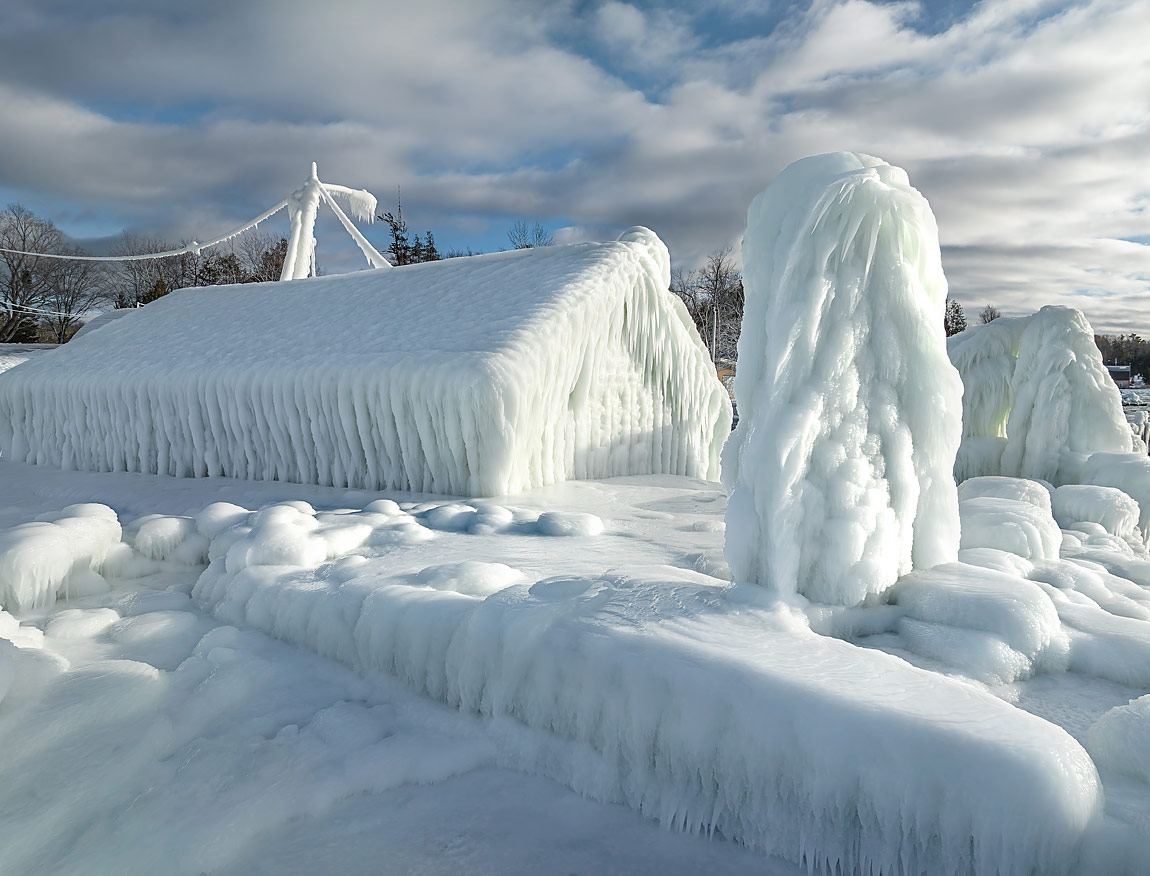I live at the tip of an 80-mile-long peninsula that extends out into Lake Michigan, so water in many forms is always nearby and a constant source of potential images. But of all the seasons, winter is my favorite.
Of all the photographic opportunities that winter can offer, I am always waiting for the annual ice machine that turns on early in the winter while the bays are still unfrozen. The conditions needed are strong winds out of the northwest and temperatures of 10 degrees Fahrenheit or lower. This causes heavy spray that sweeps on shore driven by breaking waves and wind. The freezing temperatures mean the spray will freeze on contact wherever it lands, leading to fantastical shapes. This set of conditions only occurs at the beginning of winter because the bays are freezing, and once they do freeze over, then the ice machine is done until the beginning of next winter.
This winter, the ice machine started with a vengeance. This building was clear of ice two days before, but then the winds picked up to 40-50 mph with near zero degrees Fahrenheit and this is the result. The heavy waves would strike a steel pier and send walls of freezing spray two to three times the height of the building w, which would then fall on everything you see here. Each succeeding wave then adds a thin layer of ice until the wind stops, which this year didn’t happen for 36 hours.
Many ask why this 100-year-old building doesn’t collapse under the tremendous weight of the ice that occurs to some degree every winter. It is possible that the ice itself acts like a self-supporting cage. The vertical ice pillar in the foreground is over 4 feet in diameter, but the pole beneath is only about 8 inches in diameter.
This picture was captured on Christmas day, 2022, and the ice thickness is the most I have ever seen.


